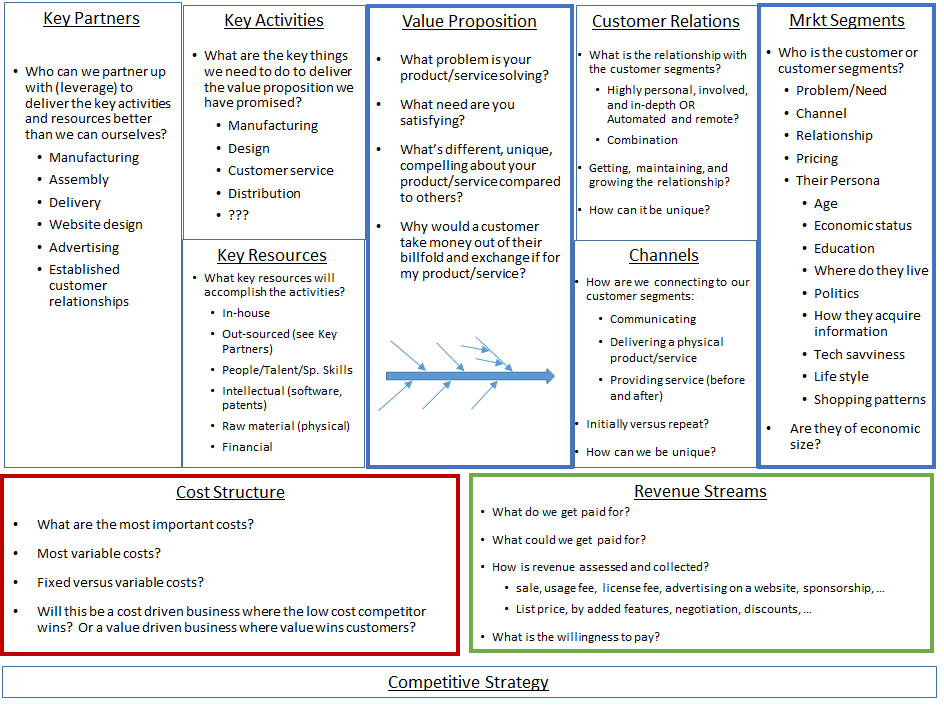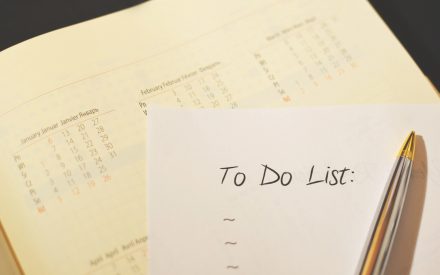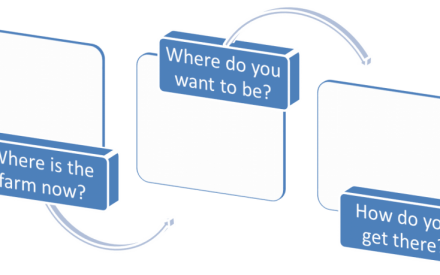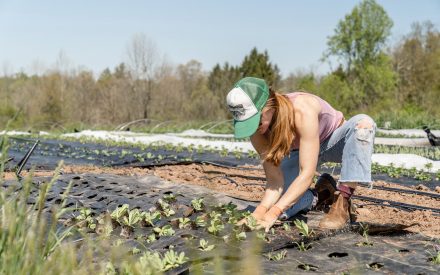Writing out a complete business plan is a time-consuming process. Before you spend your time and energy writing a multi-page narrative, explore your ideas with a simple tool—the Business Model Canvas. Adapted for use by startups, this simple one-page matrix can be a valuable tool to help farm entrepreneurs test a business idea in the context of nine key areas.

Value proposition
Explain what your farm does, what products and services you have to offer, and why customers will value and spend money on them. Focus on your product’s convenience, backstory, social or environmental goals, or joy that it brings to customers. Simply put, how is your product meeting a need or desire of your customer? And how is it doing that better than the competition’s product? Does your messaging around your farm, product, or service resonate enough with a customer for them to be curious and “take the next step”?
- Who are you?
- What does your farm do best?
- What do you have to offer customers or your community?
- What value does your product or farm bring?
- Why will people buy from you instead of someone else?
- What problem does your product solve?
The “supply” side of the Canvas
The left half of the Business Model Canvas focuses on how you will supply your product or service and deliver on customers’ needs. You likely have a lot of this thought out; the biggest challenge is getting it out of your head and onto paper.
Key partners
Identify key partners and how they will help increase revenues, decrease costs, or share risks.
- Who are the key team members/employees needed to make this work?
- What are their roles in this venture?
- Who will you partner with outside the farm business?
- Who can or will help you along the way?
- What can you do versus what will you contract with someone else to do?
Key activities
Describe what key activities you will need to accomplish to provide value to each customer segment, to create relationships, and to generate revenue.
- What do you need to do to be successful or make money?
- How will you know that you are successful?
- What are the milestones you will work toward?
Key resources
Identify resources needed to complete the activities required to provide your product or service. Consider capital needs, staff, partners, and raw materials.
- What do you need to be successful or make money?
- Who will you partner or contract with?
- Is there any infrastructure or skills you need?
- What do you have in-house and what do you have to outsource?
Cost structure
Determine what you will get paid for and how you will get paid based on your cost of production. Don’t forget to consider costs that are fixed regardless of your production and sales (e.g., rent, insurance, and interest).
- What will you charge for your services or products?
- How much will it cost you to make your product and sell it?
- What costs will vary as you increase or decrease production?
- What expenses will you have?
- Will you need to bring in additional employees or managers?
- How much and what kind of labor is needed?
- How will you pay yourself?
The “demand” side of the Canvas
The right half of the Business Model Canvas is designed to help identify customers’ needs, wants, and desires. Most farm entrepreneurs start their businesses equipped with some production know-how. Finding customers and marketing to them is typically where challenges arise. A bit of homework, groundtruthing, and putting pen to paper can help refine your marketing plan.
Market segments
This section helps you define who your customers are, including their demographics, location, behaviors, and values. Here you should also think about the economic size of your customer base: Is your audience large enough to support you full time now and as you grow your business?
- Who will be your customers?
- How do you describe your customers?
- How big is your customer base?
- How does your product compare to a competitor’s?
Sources of information to help with this section:
- Wisconsin Consumers and Local Food Study
- Wisconsin Demographics Services Center
- Wisconsin Applied Population Lab
Channels
This section will help you figure out how you should deliver and distribute your value (products or services) to the customer. From start to finish, are the channels you use to interact with your customer reinforcing your value? Think beyond the point of purchase. Is your unique value baked into all elements of a transaction with your customers?
- How will customers find you?
- How will customers buy your product?
- How do your competitors reach customers?
- How do you communicate your value proposition to the public?
Customer relations
This section asks you to think about the type of relationship you want with your customer and what type of relationship they want with you. The best way to find out is to ask. Use a survey or informal conversation to figure out how much of a relationship your customers are looking for. You may also want to consider what level of interaction you have the skill or capacity to maintain.
- What relationship will you have with your customers?
- How will you interact with your customers?
- How will you maintain relationships with your customers?
- Why will they keep coming back?
- Who are you competing against?
- What is unique about your customer relations?
Revenue streams
This section is all about getting paid. What do you get paid for and how? Consider add-on supplies or services that could build revenue without too much additional work. The Covid-19 pandemic has taught us the importance of diversifying revenue streams to handle shocks. Use this lesson to build resilience into your business.
- How will you make money?
- How will you set pricing or determine what customers are willing to pay?
- How much can you make and sell in a year?
- Can this be scaled up or down?
- How will you grow?
- What else could you get paid for?
What happens next?
Once you identify your unique value and potential business model, try to test it with your customer segments via informal interviews or a survey tool with potential customers. Do your assumptions hold up? Would people be willing to take the next step and make a purchase from you after learning about your value?
Learn more about using the Lean Startup process to test your business model assumptions by checking out Creating a Value-Added Business Model That Works.
Original article was written by Leigh Presley, former Agriculture Educator for Racine & Kenosha Counties, March 2021. Article was revised and updated by Stephanie Plaster, Regional Farm Management Educator, April 2022.


 Assess your Farm Business using a SWOT Analysis
Assess your Farm Business using a SWOT Analysis Identifying strategies to maximize potential and minimize risk
Identifying strategies to maximize potential and minimize risk Three questions to ask yourself when planning the future of a farm business
Three questions to ask yourself when planning the future of a farm business Developing your farm business idea
Developing your farm business idea


